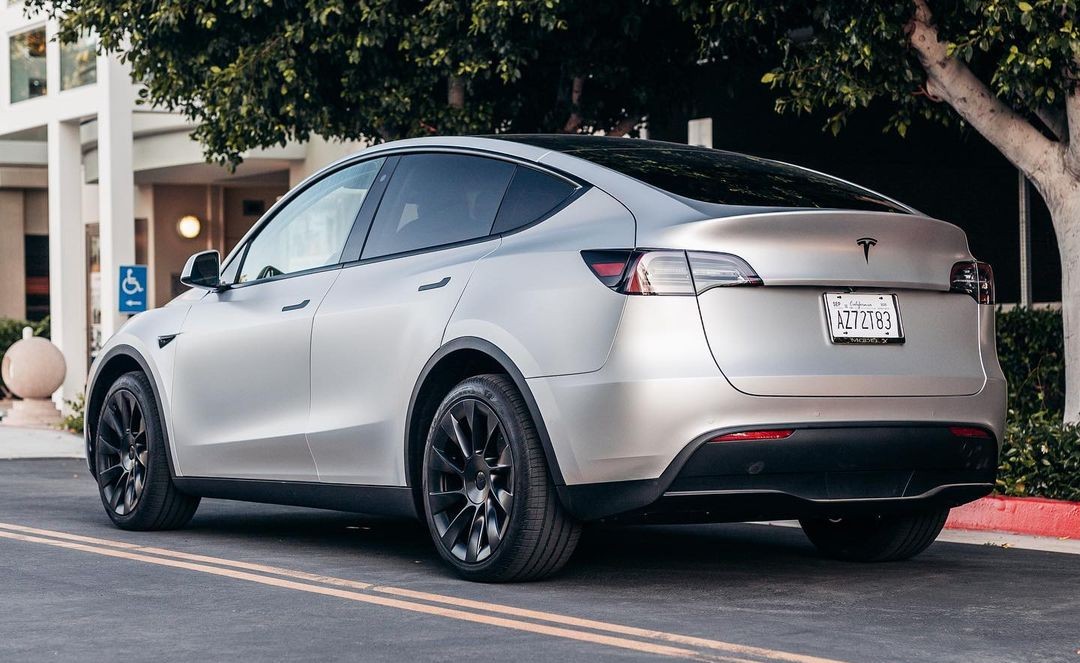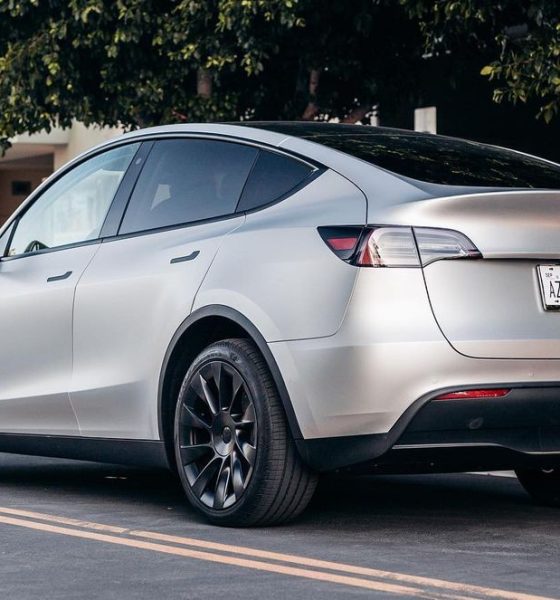

News
Tesla’s Safety Score system will be key to in-house insurance’s affordability
Tesla’s Safety Score system may still be in its early stages, but it seems to be a key part of some of the company’s upcoming products. This is particularly true for the Safety Score system, which was recently launched ahead of FSD Beta’s expansion. As observed by Tesla owners who signed up for the company’s in-house insurance in Texas, their rates would be directly tied to their respective Safety Scores.
This is something that would be expected as Tesla expands its in-house insurance service to other states, and perhaps even abroad. As mentioned by CFO Zachary Kirkhorn during the recently-held Q3 2021 earnings call, insurance costs are generally not the fairest thing in the market, with low-risk owners typically overpaying on their rates to subsidize drivers who were riskier on the road. Kirkhorn explained that the car insurance market, in its current state, uses limited data. Fortunately, data just happens to be one of Tesla’s biggest strengths.
“We entered the insurance market kind of unintentionally, I would say. Our customers were coming to us, complaining that the price of traditional insurance was too high and it was reducing the affordability of a Tesla… As we started to do more research, essentially, the tools by which the insurance is traditionally calculated are optimized based upon the existing data, but the existing data is limited. So there’s a focus on things like marital status or age or other attributes like that. Accident history is a good one, etc.
“But what essentially happens here is customers who are low risk and don’t actually file many claims end up overpaying on their insurance relative to their cost. That overpayment then goes to riskier customers who are essentially being subsidized. And, you know, as we looked at this and we looked at the data, we thought this just doesn’t seem like it’s fair. At Tesla, because our cars are connected, because they are essentially computers on wheels, there’s enormous amounts of data that we have available to us to be able to assess the attributes of a driver who’s operating that car and whether those attributes correlate with safety because we do get a signal when a car has been in an accident,” the CFO remarked.
Tesla then proceeded to analyze literally billions of miles of driving history from its fleet, and from this study came a model that was able to predict with decent accuracy the probability of collisions over time. But this was just the beginning. Tesla has learned and is continuing to learn a lot more about its fleet, particularly as the company rolled out its Safety Score system and the FSD Beta Enrollment Program.
“We have almost 150,000 cars currently using a safety score. And I believe the latest data is over 100 million miles of driving. So we’ve been able to go back and analyze that data. And we’ve learned two things coming from that. The first is that the probability of collision for a customer using a safety score versus not is 30% lower. It’s a pretty big difference. It means that the product is working and customers are responding to it. The second thing that we’ve looked at is what is the probability of collision based upon actual data as a function of a driver safety score.
“And that is aligning with our models. Most notably, if you’re in the top tier of safety compared to lower tiers, there’s multiple X difference in probability of collision based upon actual data. So this is a very new and very exciting frontier for us. I know that was long-winded, but I — we spent a lot of time on this and we put a lot of thought into it… So we’re very excited about it. We’re excited about individual risk-based pricing. We’re excited about the ability for folks to become safer and, as a result, save money. And it feeds into our priority of a company — of building the safest products in the world,” Kirkhorn concluded.
Don’t hesitate to contact us with news tips. Just send a message to tips@teslarati.com to give us a heads up.

News
Elon Musk’s Grokipedia surges to 5.6M articles, almost 79% of English Wikipedia
The explosive growth marks a major milestone for the AI-powered online encyclopedia, which was launched by Elon Musk’s xAI just months ago.

Elon Musk’s Grokipedia has grown to an impressive 5,615,201 articles as of today, closing in on 79% of the English Wikipedia’s current total of 7,119,376 articles.
The explosive growth marks a major milestone for the AI-powered online encyclopedia, which was launched by Elon Musk’s xAI just months ago. Needless to say, it would only be a matter of time before Grokipedia exceeds English Wikipedia in sheer volume.
Grokipedia’s rapid growth
xAI’s vision for Grokipedia emphasizes neutrality, while Grok’s reasoning capabilities allow for fast drafting and fact-checking. When Elon Musk announced the initiative in late September 2025, he noted that Grokipedia would be an improvement to Wikipedia because it would be designed to avoid bias.
At the time, Musk noted that Grokipedia “is a necessary step towards the xAI goal of understanding the Universe.”
Grokipedia was launched in late October, and while xAI was careful to list it only as Version 0.1 at the time, the online encyclopedia immediately earned praise. Wikipedia co-founder Larry Sanger highlighted the project’s innovative approach, noting how it leverages AI to fill knowledge gaps and enable rapid updates. Netizens also observed how Grokipedia tends to present articles in a more objective manner compared to Wikipedia, which is edited by humans.
Elon Musk’s ambitious plans
With 5,615,201 total articles, Grokipedia has now grown to almost 79% of English Wikipedia’s article base. This is incredibly quick, though Grokipedia remains text-only for now. xAI, for its part, has now updated the online encyclopedia’s iteration to v0.2.
Elon Musk has shared bold ideas for Grokipedia, including sending a record of the entire knowledge base to space as part of xAI’s mission to preserve and expand human understanding. At some point, Musk stated that Grokipedia will be renamed to Encyclopedia Galactica, and it will be sent to the cosmos.
“When Grokipedia is good enough (long way to go), we will change the name to Encyclopedia Galactica. It will be an open source distillation of all knowledge, including audio, images and video. Join xAI to help build the sci-fi version of the Library of Alexandria!” Musk wrote, adding in a later post that “Copies will be etched in stone and sent to the Moon, Mars and beyond. This time, it will not be lost.”
News
Tesla Model 3 becomes Netherlands’ best-selling used EV in 2025
More than one in ten second-hand electric cars sold in the country last year was a Tesla Model 3.

The Tesla Model 3 became the most popular used electric car in the Netherlands in 2025, cementing its dominance well beyond the country’s new-car market.
After years at the top of Dutch EV sales charts, the Model 3 now leads the country’s second-hand EV market by a wide margin, as record used-car purchases pushed electric vehicles further into the mainstream.
Model 3 takes a commanding lead
The Netherlands recorded more than 2.1 million used car sales last year, the highest level on record. Of those, roughly 4.8%, or about 102,000 vehicles, were electric. Within that growing segment, the Tesla Model 3 stood far ahead of its competitors.
In 2025 alone, 11,338 used Model 3s changed hands, giving the car an 11.1% share of the country’s entire used EV market. That means more than one in ten second-hand electric cars sold in the country last year was a Tesla Model 3, Auto Week Netherlands reported. The scale of its lead is striking: the gap between the Model 3 and the second-place finisher, the Volkswagen ID3, is more than 6,700 vehicles.
Rivals trail as residual values shape rankings
The Volkswagen ID.3 ranked a distant second, with 4,595 used units sold and a 4.5% market share. Close behind was the Audi e-tron, which placed third with 4,236 registrations. As noted by Auto Week Netherlands, relatively low residual values likely boosted the e-tron’s appeal in the used market, despite its higher original price.
Other strong performers included the Kia Niro, the Tesla Model Y, and the Hyundai Kona, highlighting continued demand for compact and midsize electric vehicles with proven range and reliability. No other model, however, came close to matching the Model 3’s scale or market presence.
News
Tesla Model Y Standard Long Range RWD launches in Europe
The update was announced by Tesla Europe & Middle East in a post on its official social media account on X.

Tesla has expanded the Model Y lineup in Europe with the introduction of the Standard Long Range RWD variant, which offers an impressive 657 km of WLTP range.
The update was announced by Tesla Europe & Middle East in a post on its official social media account on X.
Model Y Standard Long Range RWD Details
Tesla Europe & Middle East highlighted some of the Model Y Standard Long Range RWD’s most notable specs, from its 657 km of WLTP range to its 2,118 liters of cargo volume. More importantly, Tesla also noted that the newly released variant only consumes 12.7 kWh per 100 km, making it the most efficient Model Y to date.
The Model Y Standard provides a lower entry point for consumers who wish to enter the Tesla ecosystem at the lowest possible price. While the Model 3 Standard is still more affordable, some consumers might prefer the Model Y Standard due to its larger size and crossover form factor. The fact that the Model Y Standard is equipped with Tesla’s AI4 computer also makes it ready for FSD’s eventual rollout to the region.
Top Gear’s Model Y Standard review
Top Gear‘s recent review of the Tesla Model Y Standard highlighted some of the vehicle’s most notable features, such as its impressive real-world range, stellar infotainment system, and spacious interior. As per the publication, the Model Y Standard still retains a lot of what makes Tesla’s vehicles well-rounded, even if it’s been equipped with a simplified interior.
Top Gear compared the Model Y Standard to its rivals in the same segment. “The introduction of the Standard trim brings the Model Y in line with the entry price of most of its closest competition. In fact, it’s actually cheaper than a Peugeot e-3008 and costs £5k less than an entry-level Audi Q4 e-tron. It also makes the Ford Mustang Mach-E look a little short with its higher entry price and worse range,” the publication wrote.








